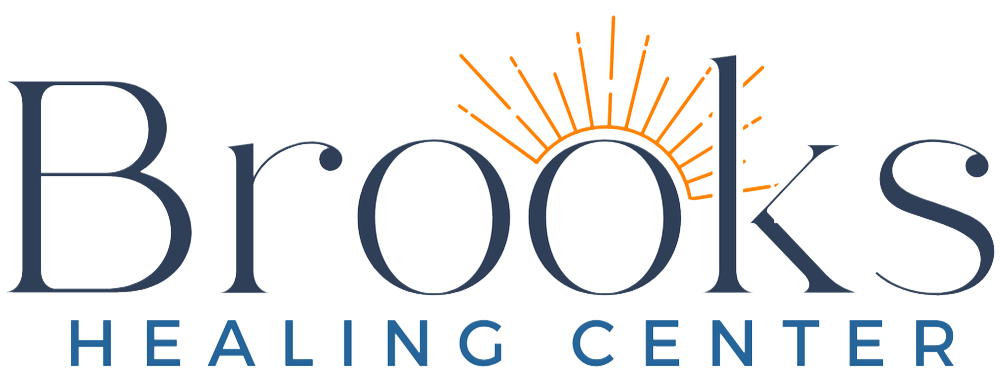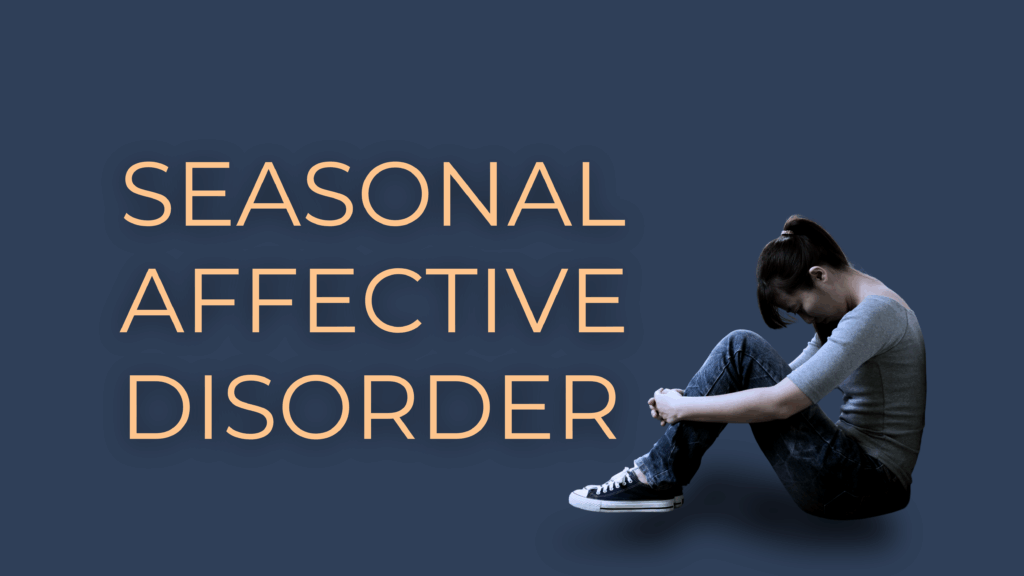Recovery is never a one-season journey. As the months shift, so do the challenges, and for many, seasonal affective disorder (SAD) (also known as “seasonal depression” or “winter depression”) is one of the hardest to manage. More than “winter blues,” SAD is a form of depression that develops in late fall or winter when daylight decreases and circadian rhythms become disrupted.
For people in recovery, this isn’t just a mood shift. The fatigue, hopelessness, oversleeping, and isolation tied to winter depression can mimic relapse warning signs or fuel cravings. Many people don’t realize that symptoms of SAD, such as low energy, loss of motivation, and negative self-talk, look very similar to the emotional and behavioral cues that often precede a relapse.
At Brooks Healing Center, we recognize that seasonal patterns affect recovery. While we treat substance use directly, our programs are designed to help clients build resilience and coping skills that address the symptoms of seasonal depression alongside addiction. This approach makes it possible to keep sobriety steady even through the darkest months of the year.
Seasonal Affective Disorder Symptoms
Recognizing the signs of seasonal affective disorder (SAD) is the first step in protecting recovery. While many people write off changes in mood as “just winter blues,” SAD has a clear pattern and specific symptoms that can interfere with sobriety if left unaddressed.
Common SAD symptoms include:
- Low mood or persistent sadness that lasts most of the day, nearly every day in the season.
- Loss of interest in activities, hobbies, or recovery groups once enjoyed.
- Fatigue and low energy, even with adequate sleep.
- Oversleeping or difficulty waking up, sometimes called hypersomnia.
- Cravings for carbohydrates or weight gain, which can trigger shame or body-image stress.
- Difficulty concentrating, which may affect work, school, or therapy progress.
- Social withdrawal, pulling away from peers, support networks, or family.
- Feelings of hopelessness or worthlessness, which can feed relapse thoughts.
In recovery, these symptoms matter because they overlap with relapse warning signs. Fatigue, negative self-talk, skipping meetings, or isolating from peers can all be misread as “losing commitment” when in fact they may be tied to seasonal depression. Identifying SAD symptoms early allows people to take proactive steps, whether it’s adding light therapy, strengthening routines, or reaching out to support, before cravings or relapse risk build up.
Why Seasonal Affective Disorder Matters in Recovery
Seasonal affective disorder matters because the symptoms overlap with common relapse triggers. Without understanding this connection, it’s easy to misinterpret seasonal depression as “laziness” or relapse risk as “winter blues.” For someone rebuilding life in recovery, that misunderstanding can be dangerous.
Here’s why SAD impacts recovery so strongly:
- Mood changes fuel cravings: When depression deepens, the urge to self-medicate with alcohol, opioids, or stimulants becomes stronger.
- Isolation increases risk: SAD often causes people to withdraw socially. Skipping support groups, alumni calls, or peer check-ins leaves individuals more vulnerable.
- Routine disruption: Fatigue and oversleeping can throw off healthy routines — leading to missed therapy, fewer workouts, or skipped meals that destabilize recovery.
- Trigger stacking: Add SAD symptoms on top of holiday stress and cravings, and relapse risk compounds quickly.
| SAD Symptom | Impact on Recovery | Relapse Trigger Example |
| Fatigue / low energy | Missed meetings, reduced exercise | “I’m too tired for group today.” |
| Hopelessness | Negative self-talk, relapse thoughts | “Maybe sobriety isn’t worth it.” |
| Oversleeping | Missed therapy sessions | Skipping morning check-ins |
| Cravings for carbs | Shame or body-image stress | Emotional eating → substance craving |
The overlap between SAD symptoms and relapse risks shows why proactive planning matters so much for people in recovery.
How to Deal With Seasonal Affective Disorder in Recovery
Living with SAD requires intention and consistency. While no one can control the weather, small daily actions can reduce the severity of symptoms and protect sobriety.
Practical recovery-focused steps include:
- Seek professional help early: If symptoms interfere with daily life, talk to your therapist or provider. A dual-diagnosis approach can address addiction alongside depression symptoms.
- Use light strategically: Light therapy lamps (10,000 lux) can mimic sunlight and support mood stability. Combine with outdoor daylight whenever possible.
- Keep structure strong: A set daily routine, wake up, meals, meetings, sleep, is a cornerstone of recovery and becomes even more important during winter months.
- Stay connected socially: Isolation is one of the biggest relapse risks. If travel is hard, join virtual alumni groups or recovery meetings to maintain accountability.
- Move your body daily: Even 20 minutes of walking or stretching helps boost serotonin and endorphins. Exercise is a natural antidepressant.
- Practice mindfulness: Yoga, breathwork, meditation, and grounding exercises calm the nervous system and reduce cravings.
- Watch out for unhealthy coping: Replacing substances with excessive sugar, caffeine, or other substitutes can destabilize recovery. Aim for balance and accountability.
The key is planning. Many people in recovery find that mapping out coping strategies in advance, before SAD symptoms hit, gives them a safety net when energy and motivation are low.
Support at Brooks Healing Center
At Brooks Healing Center, our focus is on addiction treatment. But because recovery is never just about substance use, we also support clients in managing the symptoms of seasonal depression and SAD that so often appear alongside addiction.
Our programs provide:
- Dual-diagnosis support: Treating substance use and co-occurring mental health symptoms together.
- Medical detox: Safe stabilization for those who relapse or struggle more during the winter season.
- Holistic therapies: Yoga, meditation, nutrition support, and mindfulness practices that can help counter low mood and fatigue.
- Outdoor and eco-based therapies: Nature-based approaches that reduce isolation and bring clients into the open air, even in colder months.
- Alumni programs: Long-term connections and accountability to protect recovery through seasonal challenges.
By focusing on the whole person, addiction and the symptoms of seasonal depression alike, Brooks helps clients create stability year-round.
FAQ’s
Does vitamin D help seasonal affective disorder?
Vitamin D can help improve symptoms for some people with SAD, especially when low sunlight reduces the body’s natural vitamin D production. In recovery, stable vitamin D levels may support mood balance, but supplements should be paired with therapy, light exposure, and accountability in sobriety programs.
What to do about seasonal affective disorder in recovery?
Plan ahead. Use light therapy daily, stay active with exercise, and attend recovery meetings even when energy is low. Journaling symptoms, practicing mindfulness, and asking your sponsor or peers for extra check-ins are powerful ways to protect sobriety when SAD sets in.
Do tanning beds help seasonal affective disorder?
No. Tanning beds are not a safe or effective treatment for SAD. They increase skin cancer risk and don’t replicate the type of light used in therapy. Light therapy boxes and natural outdoor light are safer, proven options.
How do I prevent seasonal affective disorder in recovery?
You may not be able to stop SAD entirely, but prevention looks like early planning:
– Start light therapy at the beginning of fall.
– Create a daily routine with consistent sleep and meal times.
– Build extra therapy or alumni group sessions into your winter calendar.
– Stay connected socially to avoid isolation, even virtually if needed.
What causes seasonal affective disorder?
SAD develops when shorter days reduce sunlight exposure. This disrupts circadian rhythms, lowers serotonin, and increases melatonin, leading to fatigue, low mood, and cravings. In recovery, those shifts directly impact relapse triggers.
Why does seasonal depression happen?
Seasonal depression happens because of changes in daylight exposure. Reduced sunlight during fall and winter alters brain chemistry, making serotonin levels drop and melatonin rise. The result is fatigue, depression, and disrupted sleep. For people in recovery, this biochemical imbalance is particularly dangerous because it mirrors the emotional lows that once fueled substance use.
Do I have seasonal affective disorder?
You might if symptoms return each winter and last for weeks: low mood, oversleeping, cravings, or withdrawal from activities. In recovery, it’s important to talk to a provider about these patterns early, before they affect sobriety.
Is seasonal affective disorder in the DSM?
Yes. SAD is listed in the DSM-5 as a specifier for major depressive disorder, called “with seasonal pattern.” That means it’s a recognized, treatable condition, not just “winter blues.”
When does seasonal affective disorder start?
Most people notice SAD symptoms in late fall, with the peak occurring during December, January, and February. For those in recovery, this timeline overlaps with holiday stress and cravings, making prevention strategies critical.
Sources
- American Psychiatric Association. (n.d.). Seasonal affective disorder (SAD). Retrieved from https://www.psychiatry.org/patients-families/seasonal-affective-disorder
- “Major Depressive Disorder with a Seasonal Pattern.” (n.d.). NAMI. Retrieved from https://www.nami.org/about-mental-illness/mental-health-conditions/depression/major-depressive-disorder-with-a-seasonal-pattern
- Mayo Clinic. (n.d.). Seasonal affective disorder: Symptoms & causes. Retrieved from https://www.mayoclinic.org/diseases-conditions/seasonal-affective-disorder/symptoms-causes/syc-20364651
- Noble Clinics. (n.d.). What is seasonal affective disorder (SAD) and how to combat it. Retrieved from https://nobleclinics.org/what-is-seasonal-affective-disorder-sad-and-how-to-combat-it/ nobleclinics.org
- StatPearls. (n.d.). Seasonal Affective Disorder. In NCBI Bookshelf. Retrieved from https://www.ncbi.nlm.nih.gov/books/NBK568745/
- The Chronobiology and Neurobiology of Winter Seasonal Affective Disorder. (n.d.). PMC. Retrieved from https://pmc.ncbi.nlm.nih.gov/articles/PMC3202491/
- Seasonal Affective Disorder: An Overview and Update. (n.d.). PMC. Retrieved from https://pmc.ncbi.nlm.nih.gov/articles/PMC3004726/
- Pathophysiology of Seasonal Affective Disorder: A Review. (n.d.). Journal of Psychiatry & Neuroscience. Retrieved from https://med-fom-ubcsad.sites.olt.ubc.ca/files/2013/11/jpn_sad.pdf med-fom-ubcsad.sites.olt.ubc.ca
- U.K. National Health Service (NHS). (n.d.). Overview: Seasonal affective disorder (SAD). Retrieved from https://www.nhs.uk/mental-health/conditions/seasonal-affective-disorder-sad/overview/ nhs.uk
- U.S. Pharmacist. (n.d.). “Seasonal Affective Disorder: Focus on the Winter Blues.” Retrieved from https://www.uspharmacist.com/article/seasonal-affective-disorder-focus-on-the-winter-blues


